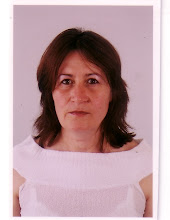
As soon as you can read these words when the news embargo lifts, the media worldwide are going to light up with the discovery of the first "potentially habitable" planet beyond Earth. Readers in the know, however, will realize that this milestone is less revolutionary than it sounds.
Gliese 581 system
Artist's concept of the dim red dwarf star Gliese 581 and company. In reality, even a "red" star would be dazzling yellow-orange if seen close up.
European Southern Observatory
"This is both an incremental and a monumental detection," sums up Sara Seager, an exoplanet specialist at MIT and frequent Sky & Telescope author. Many planets nearly like this one have already been found, so everyone in the exoplanet community was expecting a discovery like this any day now. What's special about this planet is that it orbits in its star's "Goldilocks" temperature zone where liquid water could exist on the surface. But even if such a discovery was expected, this is the one that will forever go into the record books.
Tha planet is Gliese 581g, one of at least six low-mass worlds orbiting the dim red-dwarf star Gliese 581 just 20 light-years away in Libra. The orbits were teased apart from 240 high-precision radial-velocity measurements, spanning 11 years, tracking the tiny gravitational wobbles that the planets induce in the star.
The star is Gliese 581, a dim M3 dwarf with about a third the Sun's diameter, a third the Sun's mass, and 1.3% of the Sun's energy output. Although it's one of our near stellar neighbors, it shines at only magnitude 10.6; it's visible in most amateur telescopes but not binoculars (at right ascension 15h 19.4m, declination –7° 43′).
Its six known planets all circle it more closely than Earth orbits the Sun. They form a miniature solar system, as befits such a miniature star. Two of the previously known planets, c and d, orbit just inside and outside the liquid-water temperature zone. The new one, g, lands between them. The exact definition of the "habitable zone," however, assumes that the planets have atmospheres providing greenhouse effects not too different from Earth's. And for a long time, that will really be just a guess.
The new planet has between 3.1 and 4.3 Earth masses, based on its gravitational effect and an upper limit set by orbital stability of the whole system. It is probably mostly rock and iron like Earth. That would give it a diameter 1.2 to 1.4 times Earth's diameter (allowing for its stronger gravity to compress its interior more), and a surface gravity of about 1.5 to 2 gs. In other words, after your starship landing craft sets down you could stand up and walk around with effort. Not that we know Gliese 581g even has a solid surface to land on. It could be swathed in a super-deep, super-dense atmosphere, or it could be a global-ocean waterworld.
The planet orbits closely enough to its dim star (with a period of 36.6 days) that its rotation has surely become tidally locked to its period of revolution, so that one side faces the star in permanent day and the other faces away in permanent night. This situation is not as problematic as exoplanet buffs once feared. A tidally locked world, it turns out, would need an atmosphere only about 1% as thick as Earth's to distribute enough heat from the dayside to the nightside so that the atmosphere would not freeze out as a solid crust on the nightside.
Nor would the winds be supersonic screamers tearing everything flat, as planetologists once speculated. Based on detailed atmospheric modeling "the surface winds would be quite benign," said team member Steven Vogt (Lick Observatory) at a press conference this afternoon. High-altitude jet streams would do most of the heat transport; the surface would experience Earthly sorts of breezes of about 0 to 40 knots. Parts of such a world, said Vogt, might be "a benign, comfortable place to live."
If the atmosphere isn't too thick, you could even pick your ideal temperature zone between the hot permanent noon point and the cold permanent midnight point. "Any emerging life forms would have a wide range of stable climates to choose from and to evolve around, depending on their longitude," Vogt said.
Of course, there's a big difference between "potentially habitable" and habitable for real. Seager says she already has a student working on the range of all possible atmospheres that a 3-Earth-mass body could realistically be expected to have (as best as we know), to get an idea of what fraction of such worlds might indeed have liquid water.
Really, however, the most important thing about Gliese 581g is its closeness. Only 116 stars of any kind are nearer to us, and only 9 of these have been tracked thoroughly enough to find any such planets if they exist. The fact that one was found so close so soon, says team member Paul Butler, suggests that at least 15% or 20% of of all stars have habitable worlds. And that's even before we can detect planets with 1 Earth mass or less. So it's safe to day that there are tens of billions of potentially life-friendly worlds in our Milky Way galaxy.
But we kinda knew that.
Says Seager, "There should be many more of these soon."
For lots more information see the team's full paper. It's more readable than research papers often are, especially the introduction.
Earlier paper on other planets in this system.
Повече подробности на: http://www.skyandtelescope.com/community/skyblog/newsblog/104031014.html


Няма коментари:
Публикуване на коментар